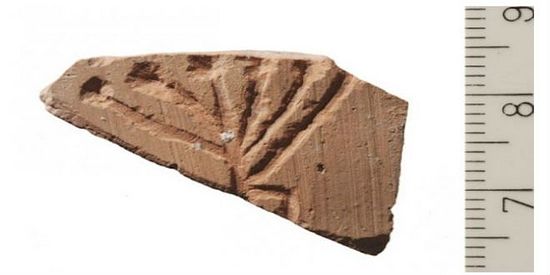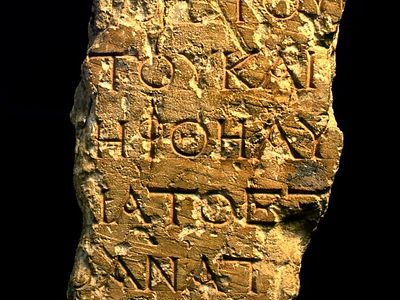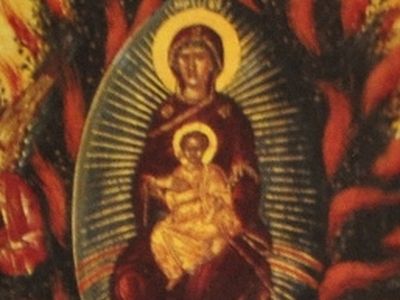Source: Breaking Israel News
December 10, 2015
 This 1,000-year-old potshard found on the Temple Mount depicting a menorah may have ended centuries of debate on the original design of the Temple Menorah. (Photo: The Temple Mount Sifting Project)
This 1,000-year-old potshard found on the Temple Mount depicting a menorah may have ended centuries of debate on the original design of the Temple Menorah. (Photo: The Temple Mount Sifting Project)
“And you shall make a menorah of pure gold…And six branches coming out of its sides: three menorah branches from its one side and three menorah branches from its second side…” (Exodus 25:32-40)
Just in time for Hanukkah, a 1,000-year-old archaeological find may just have ended a centuries old debate on what the original design of the Menorah in the Holy Temples resembled.
Discovered by the Temple Mount Sifting Project, the 1,000-year-old potsherd originating from the Temple Mount bearing a symbol resembling a menorah is being hailed by archaeologists as a significant discovery.
According to archaeologists, based on the type of clay and texture of the potsherd, the find dates back to the Byzantine rule over Jerusalem (324-640 CE). Although the whole design of the menorah is cut off because the potsherd is broken, archaeologists believe that the drawing was an attempt to draw the Temple Menorah.
“What makes this discovery significant is that it originated upon the Temple Mount itself. The design of the menorah upon the potsherd may shed light upon an age-old debate regarding the appearance of the menorah that stood in the Heikal (hall) of the First and Second Temples,” said Zachi Dvira, Co-Founder and Director of the project.
The origins of the design of the Menorah are found in the Book of Exodus (25:32-40):
“And you shall make a menorah of pure gold. The menorah shall be made of hammered work; its base and its stem, its goblets, its knobs, and its flowers shall all be one piece with it. And six branches coming out of its sides: three menorah branches from its one side and three menorah branches from its second side…so for the six branches that come out of the menorah…And you shall make its lamps seven…”
While the Bible instructs which materials to use, how to form the Menorah and what designs to incorporate, rabbinic scholars – including Rabbi Shlomo Yitzchaki, known as Rashi (1040-1105 CE), Rabbi Abraham ibn Ezra (1089-1167 CE), and Maimonides (1135-1204 CE) – have battled over whether the branches were meant to be round or straight.
The potsherd, although fragmented, clearly depicts a menorah with straight branches, unlike other ancient representations in which they appear in a circular fashion. The base of the menorah can only be partly seen and archaeologists believe it was composed of three legs (two angular and one straight).
At the top of the menorah, the branches are polygonal depressions which may represent the almond shaped cups that held the oil for the wicks.
“As the potsherd dates to centuries after the destruction of the Second Temple and the incision was done after firing the clay, it is difficult to deduce from it anything concrete regarding the original shape of the Menorah, but we can learn about how Jews living in Jerusalem during the Byzantine period or later understood the design of the menorah,” stated Dvira.
The Temple Mount Sifting Project, with support from the City of David Foundation and under the auspices of Bar-Ilan University, was formed in 1999 in response to the illegal removal of tons of earth from the Temple Mount by the Islamic Waqf without archaeological supervision.
“Since the Temple Mount has never been excavated, the ancient artifacts retrieved in the Sifting Project provide valuable and previously inaccessible information. The many categories of finds are among the largest and most varied ever found in Jerusalem. Even though they have been extracted from their archaeological context, most of these artifacts can be identified and dated by comparing them with those found at other sites,” said Dvira.



